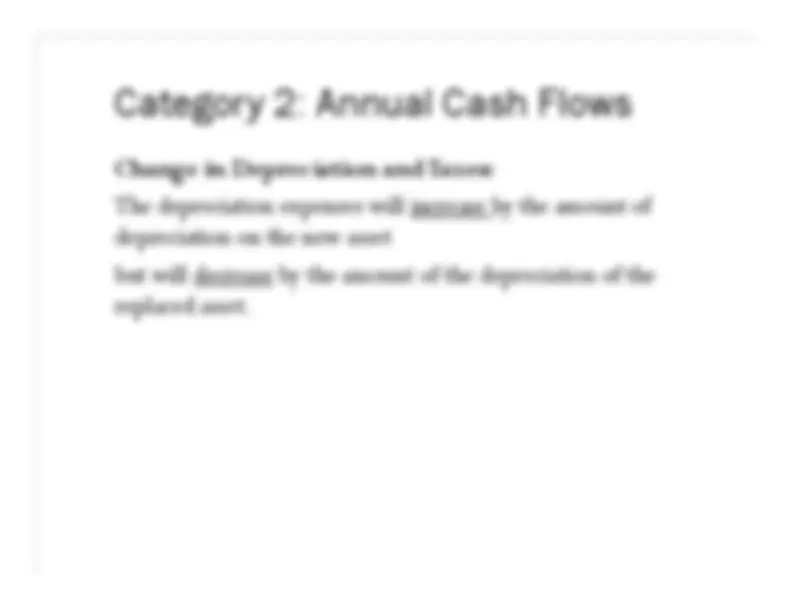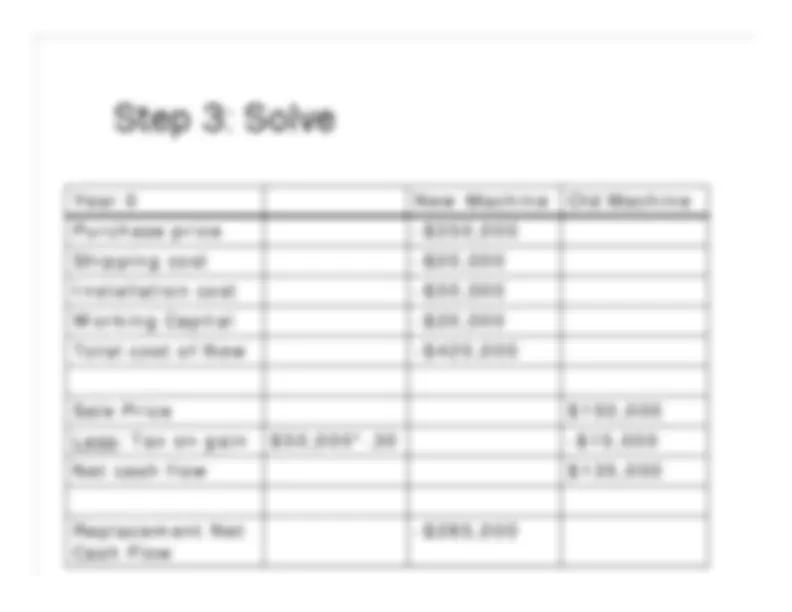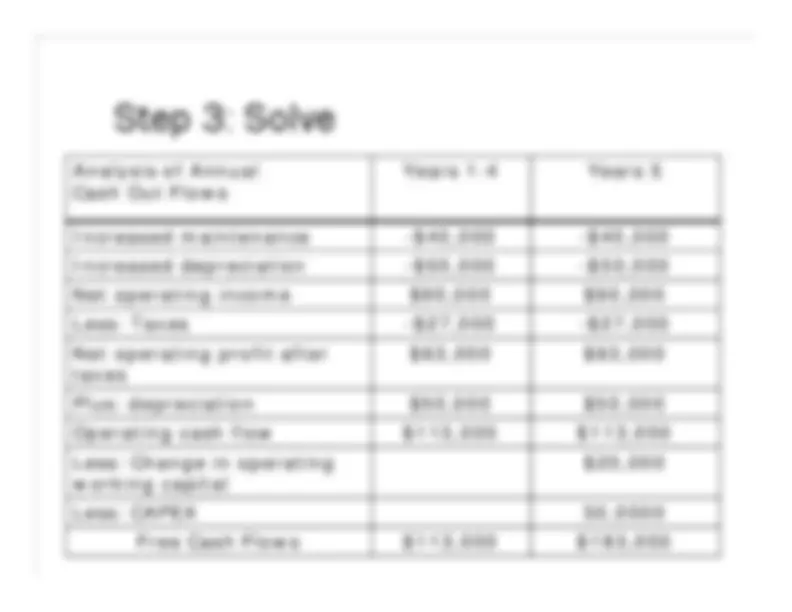
















































Study with the several resources on Docsity

Earn points by helping other students or get them with a premium plan


Prepare for your exams
Study with the several resources on Docsity

Earn points to download
Earn points by helping other students or get them with a premium plan
Community
Ask the community for help and clear up your study doubts
Discover the best universities in your country according to Docsity users
Free resources
Download our free guides on studying techniques, anxiety management strategies, and thesis advice from Docsity tutors
Forecasting Project Cash Flows. 7. Four Step Procedure for calculating cash flows. 1. Depreciation expense. 2. Change in working capital required.
Typology: Lecture notes
1 / 54

This page cannot be seen from the preview
Don't miss anything!















































Chapter 12
1
Value.
^ Principle 5: Individuals Respond to Incentives.
(such as market research) and
overhead costs
(such as utilities expenses) are not incremental cash flows. Account for positive and negative
synergistic effects
and
opportunity costs.
Working Capital Requirement ^ Need for additional working capital arises as cash inflows andoutflows are often mismatched. Ignore
Financing Costs ^ They are accounted for in the discount rate used to discountcash flows.
7
^ Four Step Procedure for calculating cash flows1.^
Depreciation expense
2.^
Change in working capital required
3.^
Change in capital expenditures
4.^
Calculate Free Cash Flows for project
÷^ (Life of the equipment)
= ($500,000 + $50,000 - $25,000)
÷^ (10)
=^ $52,
14
^ Increase working capital is a cash outflow ^ Will working capital requirements drop when the projectends?^ ^
If “Yes,” we have a cash inflow at the end of the project
Step 4: Calculating a Project’s Free Cash Flow
Checkpoint 12. ^ The firm
’s management wants to know the impact of a decrease in expected revenues from $360,000 to $240,000per year. What would be the project’s operating cash flow under therevised revenue estimate?
This is the information given to us:^ Equipment
$2,00,
Project life
5 years
Salvage Value
-
Depreciation expense
$40,000 per year
Cash Operating Expenses
-$5,000 per year
Revenues
$240,000 per year
Growth rate for revenues
0%
Cost of goods sold/Revenues
60%
Investment in Net operating workingcapital
-$78,
Required rate of return
20%
Tax rate
30%